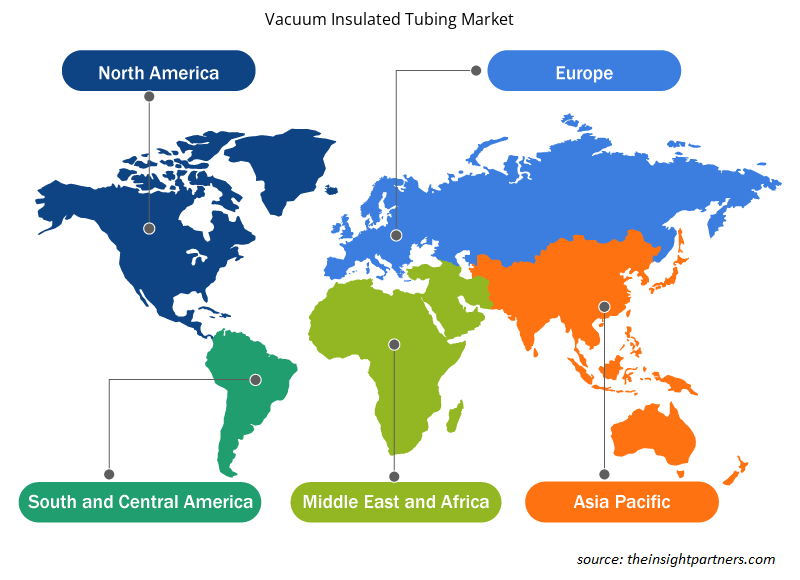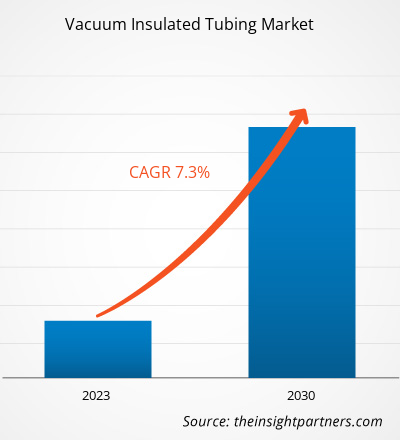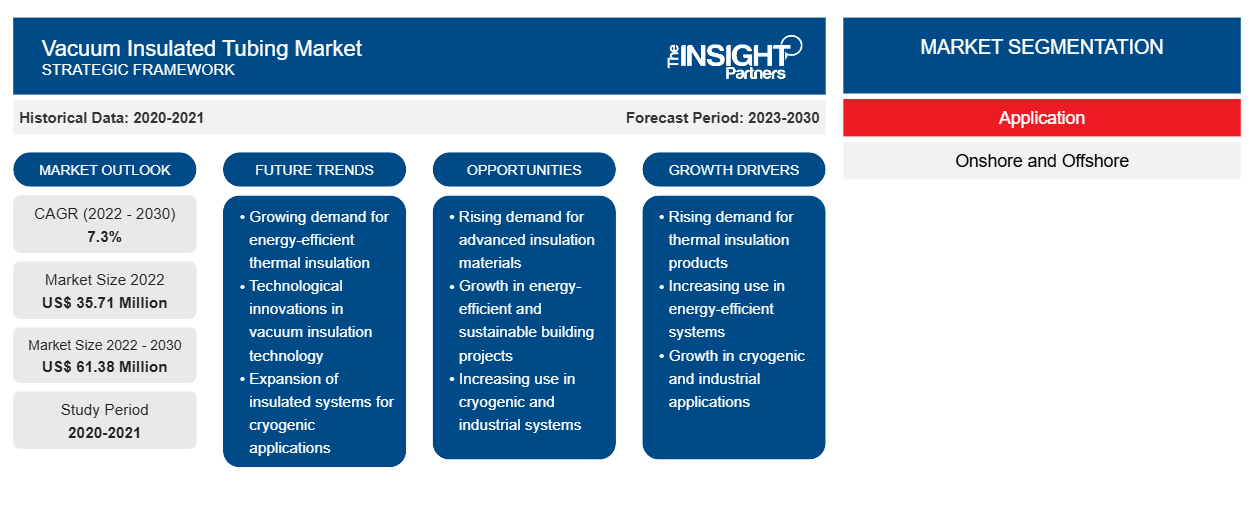[Rapporto di ricerca] Si prevede che il mercato dei tubi isolati sotto vuoto crescerà da 35,71 milioni di dollari nel 2022 a 61,38 milioni di dollari entro il 2030; si stima che registrerà un CAGR del 7,3% dal 2022 al 2030.
Prospettiva dell'analista:
In base al paese, il mercato dei tubi isolati sotto vuoto del Nord America è segmentato in Stati Uniti, Canada e Messico. Il Nord America è una delle principali regioni produttrici di petrolio al mondo. Stati Uniti e Canada sono i principali produttori di petrolio, con riserve significative e tecniche di estrazione avanzate come la fratturazione idraulica (fracking) e la perforazione orizzontale. Secondo il rapporto dell'Energy Information Administration (EIA), circa 100 paesi in tutto il mondo producono petrolio greggio ; di questi 100 paesi, i primi cinque paesi contribuiscono alla quota del 51% della produzione complessiva di petrolio greggio nel 2021. Stati Uniti e Canada contribuiscono rispettivamente al 14,5% e al 5,8% della produzione totale globale di petrolio greggio. Gli Stati Uniti hanno recentemente registrato un'impennata nella produzione di petrolio, diventando un produttore leader a livello mondiale che spinge la crescita del mercato dei tubi isolati sotto vuoto in tutta la regione a causa della crescente domanda di recupero avanzato del petrolio.
Personalizza questo report in base alle tue esigenze
Riceverai la personalizzazione gratuita di qualsiasi report, comprese parti di questo report, o analisi a livello nazionale, pacchetto dati Excel, oltre a usufruire di grandi offerte e sconti per start-up e università
-
Scopri le principali tendenze di mercato in questo rapporto.Questo campione GRATUITO includerà analisi di dati che spaziano dalle tendenze di mercato alle stime e alle previsioni.
Impatto della pandemia di COVID-19 sulla crescita del mercato dei tubi isolati sotto vuoto:
L'approvvigionamento di materiali e le operazioni dei fornitori di materie prime sono stati ostacolati dalla pandemia di COVID-19. I fornitori di materie prime hanno dovuto affrontare diverse sfide legate alle operazioni da remoto, ai servizi di trasporto e alle operazioni di produzione interna che sono state ampiamente interrotte a causa della mancanza di manodopera e di altre risorse durante la pandemia. Tutti questi fattori hanno aumentato il divario tra domanda e offerta tra i fornitori di materie prime e i produttori di tubi isolati sotto vuoto in tutto il mondo nel 2020. Inoltre, il mercato dei tubi isolati sotto vuoto ha registrato una graduale ripresa dalle interruzioni della catena di fornitura nel secondo trimestre del 2020, poiché i produttori di tubi isolati sotto vuoto hanno iniziato ad adottare nuovi scenari normali di produzione.
Driver di mercato dei tubi isolati sotto vuoto: massimizzazione del recupero delle riserve di petrolio e prolungamento della durata del campo:
Grazie al maggiore sfruttamento dei pozzi esistenti, diversi produttori chiave di petrolio e gas come ExxonMobil, Shell plc, Chevron Corporation, PetroChina e Saudi Aramco si stanno concentrando sulla massimizzazione del fattore di recupero (RF) dai loro giacimenti petroliferi esistenti e sul mantenimento di un tasso di petrolio economico. Implementando i metodi EOR, gli operatori possono rivitalizzare i serbatoi ed estrarre petrolio aggiuntivo, estendendo la vita produttiva del campo e massimizzando il valore delle risorse esistenti. La tecnica del metodo EOR con allagamento a vapore aiuta a migliorare lo spostamento del petrolio, ridurre la saturazione del petrolio residuo e migliorare l'efficienza di sweep all'interno del serbatoio. Pertanto, la crescente necessità di massimizzare il recupero delle riserve di petrolio rafforza la crescita del mercato dei tubi di isolamento sotto vuoto.
Analisi segmentale:
Il segmento offshore del mercato dei tubi isolati sotto vuoto comporta l'utilizzo di tubi isolati sotto vuoto nei pozzi di produzione di petrolio e gas situati in ambienti marini. Il segmento è costituito da vari tipi di pozzi offshore come piattaforme fisse, sistemi di produzione galleggianti e pozzi sottomarini. Nei pozzi offshore, i tubi isolati sotto vuoto possono aiutare ad attenuare il problema di produzione causato dal trasferimento di calore dai fluidi del serbatoio prodotti nella formazione circostante e nell'anello di rivestimento. I tubi isolati sotto vuoto possono affrontare efficacemente problemi come l'intasamento di idrati, la deposizione di paraffina, l'accumulo di pressione anulare nella serie di rivestimento esterno e condizioni ambientali difficili, tra cui corrosione da acqua salata, temperature estreme e pressioni elevate. Le crescenti attività di esplorazione e produzione nelle riserve offshore alimentano le dimensioni del mercato dei tubi isolati sotto vuoto per il segmento offshore. Il crescente numero di piattaforme petrolifere e di gas negli Stati Uniti indica crescenti attività di perforazione e potenziale produzione futura. Pertanto, ci sarà un'elevata domanda di risorse energetiche che potrebbe portare a una maggiore produzione offshore e alla necessità di tubi isolati sotto vuoto per affrontare il trasferimento di calore nelle operazioni in acque profonde. I tubi isolati sotto vuoto consentono una produzione efficiente nei pozzi offshore riducendo al minimo la perdita di calore e mantenendo la temperatura desiderata dei fluidi prodotti. Le proprietà isolanti dei tubi isolati sotto vuoto aiutano a ottimizzare le prestazioni dei sistemi di produzione offshore, migliorando i tassi di produzione e l'efficienza operativa complessiva.
Analisi regionale:
Il Nord America ha dominato il mercato dei tubi isolati sotto vuoto nel 2022 con una quota del 51,3%; continuerà a dominare il mercato durante il periodo di previsione e rappresenterà una quota del 54,6% entro il 2030. Il Medio Oriente e l'Africa sono il secondo maggiore contributore al mercato globale dei tubi isolati sotto vuoto, seguito dall'Asia Pacifica.
In Medio Oriente e Africa (MEA), Emirati Arabi Uniti, Arabia Saudita, Iran, Oman e Kuwait sono tra i principali paesi colpiti dalla pandemia di COVID-19. La maggior parte delle operazioni economiche nella regione è stata sospesa a causa di un aumento del numero di casi di COVID-19 nei primi due trimestri del 2020. Molti paesi in Africa sono ancora in fase di sviluppo. I paesi del Medio Oriente, in particolare i paesi del Consiglio di cooperazione del Golfo (GCC), hanno assistito a un notevole declino nel settore petrolifero e del gas a causa di un forte calo della domanda di petrolio da parte dei principali paesi utenti finali in Asia, Europa e Nord America. Di conseguenza, i paesi del MEA hanno registrato un basso volume di produzione di petrolio e gas, che ha successivamente ostacolato la domanda di tubi isolati sotto vuoto nella regione.
Analisi dei giocatori chiave:
L'analisi del mercato dei tubi isolati sotto vuoto comprende attori quali Andmir Group, Exceed Oilfield Equipment Inc, Imex Canada Inc, ITP Interpipe, Lake Petro, Dongying Lake Petroleum Technology CO Ltd, Nakasawa, Shengji Group, Tenergy Equipment & Service Ltd, TMK Group e Vallourec, tra gli attori del mercato dei tubi isolati sotto vuoto. TMK e Sankjack sono i due principali attori grazie al portafoglio prodotti diversificato offerto.
Approfondimenti regionali sul mercato dei tubi isolati sotto vuoto
Le tendenze regionali e i fattori che influenzano il mercato dei tubi isolati sotto vuoto durante il periodo di previsione sono stati ampiamente spiegati dagli analisti di Insight Partners. Questa sezione discute anche i segmenti e la geografia del mercato dei tubi isolati sotto vuoto in Nord America, Europa, Asia Pacifico, Medio Oriente e Africa e America centrale e meridionale.

- Ottieni i dati specifici regionali per il mercato dei tubi isolati sotto vuoto
Ambito del rapporto di mercato sui tubi isolati sotto vuoto
| Attributo del report | Dettagli |
|---|---|
| Dimensioni del mercato nel 2022 | 35,71 milioni di dollari USA |
| Dimensioni del mercato entro il 2030 | 61,38 milioni di dollari USA |
| CAGR globale (2022-2030) | 7,3% |
| Dati storici | 2020-2021 |
| Periodo di previsione | 2023-2030 |
| Segmenti coperti |
Per applicazione
|
| Regioni e Paesi coperti |
America del Nord
|
| Leader di mercato e profili aziendali chiave |
|
Densità dei protagonisti del mercato dei tubi isolati sotto vuoto: comprendere il suo impatto sulle dinamiche aziendali
Il mercato dei tubi isolati sotto vuoto sta crescendo rapidamente, spinto dalla crescente domanda degli utenti finali dovuta a fattori quali l'evoluzione delle preferenze dei consumatori, i progressi tecnologici e una maggiore consapevolezza dei vantaggi del prodotto. Con l'aumento della domanda, le aziende stanno ampliando le loro offerte, innovando per soddisfare le esigenze dei consumatori e capitalizzando sulle tendenze emergenti, il che alimenta ulteriormente la crescita del mercato.
La densità degli operatori di mercato si riferisce alla distribuzione di aziende o società che operano in un particolare mercato o settore. Indica quanti concorrenti (operatori di mercato) sono presenti in un dato spazio di mercato in relazione alle sue dimensioni o al valore di mercato totale.
Le principali aziende che operano nel mercato dei tubi isolati sotto vuoto sono:
- Gruppo Andmir
- Attrezzature per giacimenti petroliferi Exceed Inc.
- Imex Canada Inc
- Tubo intercalare ITP
- Dongying Lake Petroleum Technology Co Ltd
Disclaimer : le aziende elencate sopra non sono classificate secondo un ordine particolare.

- Ottieni una panoramica dei principali attori del mercato dei tubi isolati sotto vuoto
Sviluppi recenti:
Le strategie inorganiche e organiche come fusioni e acquisizioni sono ampiamente adottate dagli operatori del mercato dei tubi isolati sotto vuoto che operano nel mercato. Di seguito sono elencati alcuni recenti sviluppi chiave del mercato dei tubi isolati sotto vuoto:
- A marzo 2022, ADNOC Onshore, che opera onshore e nelle acque costiere poco profonde dell'Emirato di Abu Dhabi, ha annunciato un contratto da 227 milioni di dollari USA per il recupero avanzato del petrolio (EOR) a Bab Field. La società ha utilizzato polimeri avanzati per aumentare le riserve recuperabili fino al 70%, sbloccando al contempo barili aggiuntivi di greggio Murban.
- Ad aprile 2023, BP ha avviato la produzione di petrolio presso la sua piattaforma Argos situata nel Golfo del Messico. La piattaforma Argos è una struttura in acque profonde che si estende per circa 200 miglia a sud di New Orleans, Louisiana. La piattaforma è progettata con le tecnologie LoSal Enhanced Oil Recovery (EOR) e Dynamic Digital Twin per estrarre petrolio dal campo Mad Dog 2, un grande giacimento di petrolio di alta qualità situato nell'area meridionale di Green Canyon.
- Analisi storica (2 anni), anno base, previsione (7 anni) con CAGR
- Analisi PEST e SWOT
- Valore/volume delle dimensioni del mercato - Globale, Regionale, Nazionale
- Industria e panorama competitivo
- Set di dati Excel
Report recenti
Testimonianze
Motivo dell'acquisto
- Processo decisionale informato
- Comprensione delle dinamiche di mercato
- Analisi competitiva
- Analisi dei clienti
- Previsioni di mercato
- Mitigazione del rischio
- Pianificazione strategica
- Giustificazione degli investimenti
- Identificazione dei mercati emergenti
- Miglioramento delle strategie di marketing
- Aumento dell'efficienza operativa
- Allineamento alle tendenze normative























 Ottieni un campione gratuito per - Mercato dei tubi isolati sotto vuoto
Ottieni un campione gratuito per - Mercato dei tubi isolati sotto vuoto